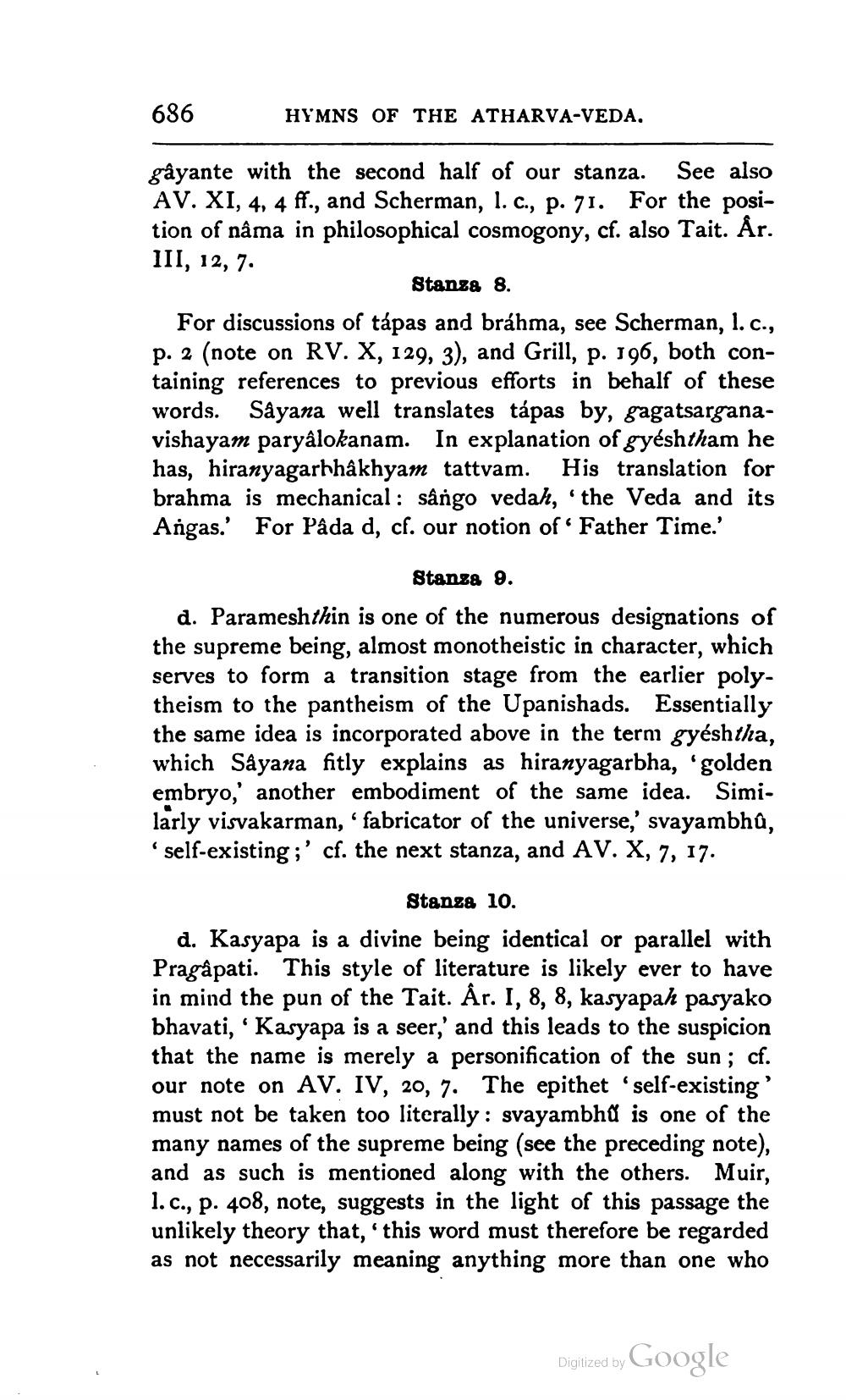________________
686
HYMNS OF THE ATHARVA-VEDA.
gâyante with the second half of our stanza. AV. XI, 4, 4 ff., and Scherman, l. c., p. 71. tion of nâma in philosophical cosmogony, cf. III, 12, 7.
Stanza 8.
For discussions of tápas and bráhma, see Scherman, l. c., p. 2 (note on RV. X, 129, 3), and Grill, p. 196, both containing references to previous efforts in behalf of these words. Sâyana well translates tápas by, gagatsarganavishayam paryâlokanam. In explanation of gyéshtham he has, hiranyagarhhâkhyam tattvam. His translation for brahma is mechanical: sângo vedah, 'the Veda and its Angas.' For Pâda d, cf. our notion of Father Time.'
(
See also
For the posialso Tait. År.
Stanza 9.
d. Parameshthin is one of the numerous designations of the supreme being, almost monotheistic in character, which serves to form a transition stage from the earlier polytheism to the pantheism of the Upanishads. Essentially the same idea is incorporated above in the term gyéshtha, which Sâyana fitly explains as hiranyagarbha, 'golden embryo,' another embodiment of the same idea. Similarly visvakarman, 'fabricator of the universe,' svayambhû, self-existing;' cf. the next stanza, and AV. X, 7, 17.
Stanza 10.
·
d. Kasyapa is a divine being identical or parallel with Pragâpati. This style of literature is likely ever to have in mind the pun of the Tait. År. I, 8, 8, kasyapah pasyako bhavati, Kasyapa is a seer,' and this leads to the suspicion that the name is merely a personification of the sun; cf. our note on AV. IV, 20, 7. The epithet 'self-existing ' must not be taken too literally: svayambhu is one of the many names of the supreme being (see the preceding note), and as such is mentioned along with the others. Muir, 1. c., p. 408, note, suggests in the light of this passage the unlikely theory that, 'this word must therefore be regarded as not necessarily meaning anything more than one who
Digitized by
Google




